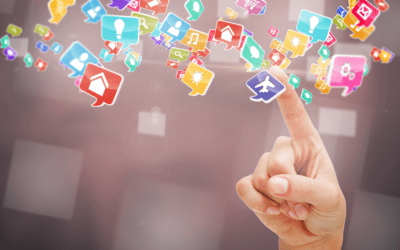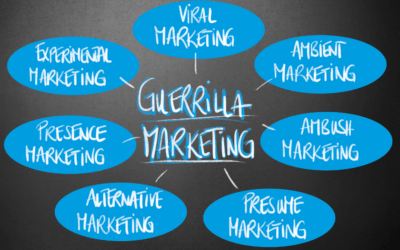It’s helping scale reach while saving time like never before.
But in the rush to systematize, many founders and marketers are forgetting the one thing that truly builds market share.
The human element.
This is your brand’s true differentiator.
And ironically, it’s never been more important than in the age of AI.
In an age where more humans are sounding robotic, how do we keep our brand integrity while reaping the time/cost savings benefits of AI?
Let’s break this down.
AI Is Your Engine, But Brand Is The Driver
It’s tempting to treat AI like the holy grail.
“I can create 20 blogs in under 5 minutes”
“I can make 40 newsletter emails for the next 6 months!”
Great. But what happens when all that content feels… generic?
Let me ask you something:
Would you rather receive a perfectly timed email from a robotic “team member” you don’t know, or a slightly imperfect Loom video from a founder who gets your exact pain and speaks with conviction?
The loom is made once and it ends up feeling more personalized.
People respond to energy. AI doesn’t have that. You do.
While AI scales mechanics and repetitive tasks (great for business owners). Brand scales trust.
So if you’re using AI (and you should be) you need to lead with the one thing AI can’t fake:
Human resonance and connection.
So how do you create a brand while leveraging A.i.? Let’s talk about it.
Tip #1: Make Your Brand a Person
Here’s a mindset shift: stop thinking of your brand as colors, a logo, a mascot or a font.
Start thinking of it as a character– a living, breathing person.
Every great brand has a persona:
- Nike = the inner athlete
- Apple = the creative challenger
- Tesla = the rebellious genius
- Your brand? Fill in the blank.

Define your Brand Archetype. There are 12 classic ones (e.g., Hero, Sage, Creator, Rebel). Pick 1–2 and infuse that energy into your:
- Copy
- Tone of voice
- Visuals
- Calls-to-action
- AI messaging
For example If you’re a coach and your brand archetype falls under “The Sage,” your AI email follow-ups shouldn’t sound pushy. They should be calmly authoritative.
With this brand type you’re not chasing you’re instead guiding.
Once you define this, give your AI tools information about your brand tone. Don’t just generate text. Tell ChatGPT:
“Write this email in the tone of a calm, confident guide who knows the path and respects the reader’s intelligence.”
Another route you can go is giving Chat-GPT a direct link to a past blog or email you wrote. You can have Chat-GPT store your tone or writing style in its memory and tap into the tone or writing style when you need to create another piece of content.
How efficient is that? Very much so!
Now you’re using AI as a mirror to your brand — not just a megaphone.
Tip #2 Make Every AI Interaction a Trust-Building Moment
AI is now handling what used to be human-first touchpoints — outbound calls, onboarding flows, DMs, even sales pages.
So here’s the golden question:
How can I inject empathy and intention into this automated moment?
Consider this contrast:
- LinkedIn Cold DM:
“Hey, Jeremy — want 10–15 qualified leads per week?” - Humanized AI DM:
“Jeremy, noticed your team is leveraging Facebook Ads + AI. Curious — how are you currently handling lead qualification after that initial ad click?”
Same tools. Vastly different energy.
You can script empathy and add micro-trust into each automation. You just have to care before you automate.
Pro Tip: Have your AI website chatbot acknowledge the reality of the customer’s day.
“Hey, I know you’re probably slammed with a busy day today so I’ll be quick, [Insert follow-up response].”
That sentence shifts the dynamic from interruption to alignment. It’s more human.
If you know your audience well (which we have an entire blog on) your automated messages can include their psychographic information in it.
Tip #3: Use Personal Signals with AI (the Smart Way)
You don’t need to write 100 personalized messages a day to stand out (in the context of email marketing).
You just need AI that knows what signals to look for — and how to use them.
The best outreach doesn’t feel robotic because it isn’t. It’s powered by AI, but grounded in a real, human context.
Here are a few examples of personal signal data you can train your AI systems to pull:
- A company’s website headline
- Their latest Google review
- A comment they left on a Facebook ad
When your AI tools are trained to extract and use that context in messaging, outreach starts to feel thoughtful and specific — even at scale.
Example:
Let’s say a roofing company’s website says:
“Trusted by over 7,000 homeowners across Dallas.”
The AI-generated message might open with:
“7,000+ homeowners… that’s impressive [name], Is that kind of volume putting pressure on your internal team when it comes to follow-up?”
It reads like a custom message because it’s signal-based. AI just helped deliver it faster. This is another example of keeping the humanness in messaging.
Scale + context = personalization that converts better.
Tip #4: Make AI Human with Your Face
One of the common missteps in the AI age?
Brands remove the founder.
They let the AI run everything either through a random AI name or an employee.
But people don’t buy from systems, they buy from people they trust.
In fact, branding is about people. It’s about the reputation that a person or entity builds through time.
So yes, let AI handle repetitive tasks. But you still need to show up, especially at key emotional moments in your customer journey. These moments are top of funnel content, middle of funnel email nurturing and client onboarding emails.
Here are easy ways to put a human face to A.i.:
- Ai-assisted LinkedIn written content that goes on the founder’s personal page instead of the company page. These text posts are a mixture of industry insights, news, case studies, and personal stories. All of this is possible through Chat-GPTs memory capabilities
- Ai-generated email newsletters with a post schedule. Emails are sent from the founder and segmented based on the audience for better personalization.
- A 90-second welcome video – after someone becomes a client they get a welcome video. (the video should really be the founder but different videos are sent to different clients based on the product/service they invested in.)
Tip #5: Use AI to Read Emotions, Not Just Numbers
Most businesses use AI to crunch numbers: clicks, views, conversions.
But the smartest brands are using AI to understand emotional signals.
Here’s how:
Feed your call transcripts, chat logs, or email replies into a tool like Chat-GPT or Claude.ai and ask:
“What are the top 3 emotions expressed here? What’s this person really looking for?”
You’ll start to hear deeper themes:
- Frustration with past experiences
- Fear of wasting time or money
- A desire for control or clarity
- Relief in finding someone who actually understands
Now take those insights and build your messaging around them.
This will allow you to empathize better with your lead, client or past client. When people feel understood, trust gets built.
74% of consumers believe brand loyalty is about feeling understood and valued.
The Future Is AI-Supported, But Human-Driven
AI is powerful.
It can help you move faster, act smarter and reach farther
But if your brand doesn’t feel human– it just won’t stick unfortunately.
The brands that win won’t be the ones with the flashiest AI tools.
They’ll be the ones with the clearest emotional tone and the most authentic voice — delivered with the help of AI, not hidden by it.
So use the technology, train your systems, but always keep your human truth front and center.
Your mission, vision, and values should always be at the forefront of your mass messaging.














